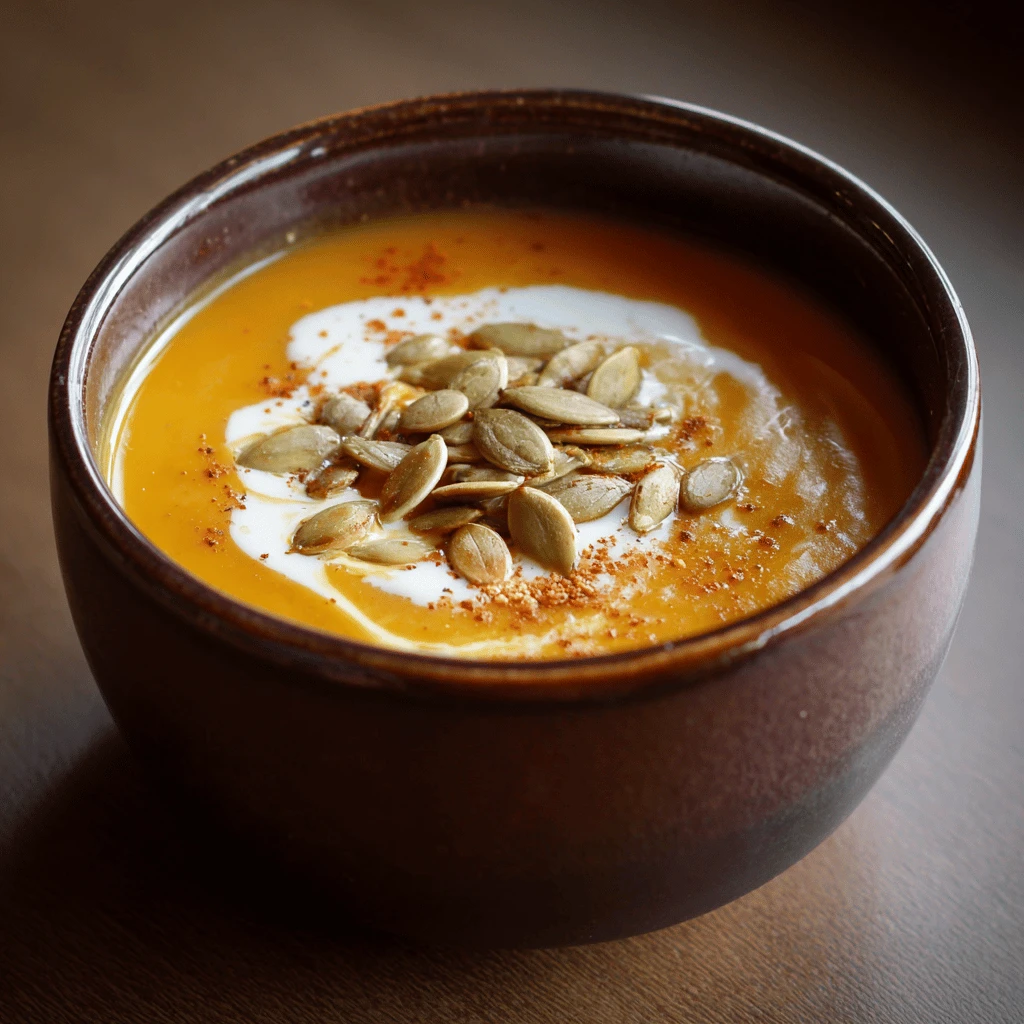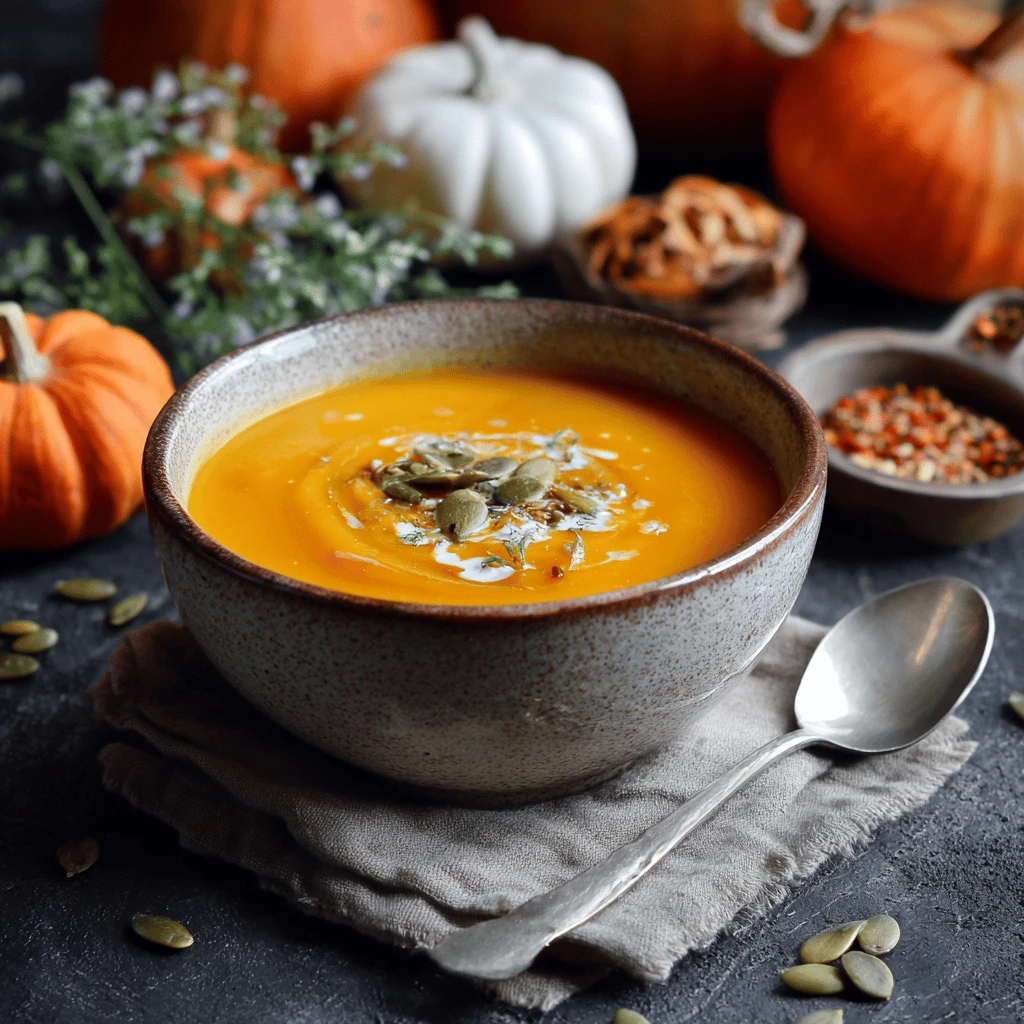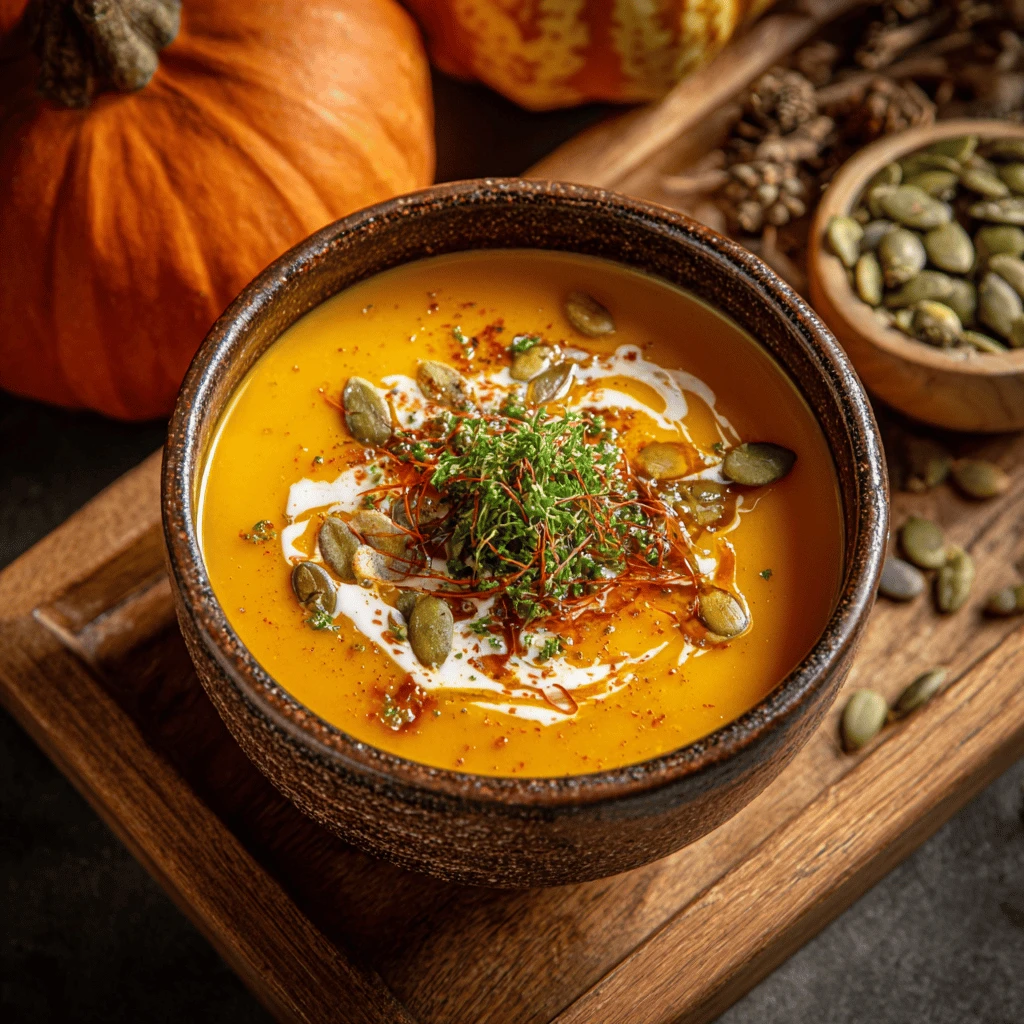Homemade Sweet Pumpkin Soup: A Fall Favorite
As the leaves turn golden and the air crisps, nothing quite satisfies like a warm bowl of homemade sweet pumpkin soup. This comforting classic is not only delicious but also packed with nutrients, making it a healthy and flavorful option for any meal. This guide will walk you through creating the perfect pumpkin soup, from selecting the right pumpkin to adding creative twists.
Choosing the Perfect Pumpkin
The foundation of any great pumpkin soup lies in the quality of the pumpkin itself. While decorative pumpkins might be tempting, they often lack the flavor and texture needed for a truly exceptional soup.
Varieties to Consider
- Sugar Pumpkins (Pie Pumpkins): These are the go-to choice for their sweet, creamy flesh and concentrated pumpkin flavor. Look for pumpkins that feel heavy for their size, indicating a dense, moist interior.
- Jarrahdale: This Australian heirloom variety offers a slightly nutty flavor and a beautiful blue-grey skin. It’s a great option for adding complexity to your soup.
- Kabocha: While technically a squash, Kabocha boasts a sweet, chestnut-like flavor that works wonderfully in pumpkin soup. Its flesh is dense and smooth when cooked.
Preparing Your Pumpkin
Once you’ve chosen your pumpkin, preparation is key.
1. Roasting: Roasting the pumpkin enhances its sweetness and brings out its natural flavors. Preheat your oven to 400°F (200°C). Cut the pumpkin in half, scoop out the seeds (save them for roasting later!), and place the halves cut-side up on a baking sheet. Roast for 45-60 minutes, or until the flesh is tender and easily pierced with a fork.
2. Puréeing: After roasting, let the pumpkin cool slightly. Scoop out the flesh and purée it in a food processor or blender until smooth. If you don’t have a food processor, you can mash the pumpkin with a fork, but the texture may not be as smooth.
Crafting the Base: Aromatics and Broth
With your pumpkin purée ready, it’s time to build the flavor base of your soup. Aromatics and a good-quality broth are essential for creating a rich and satisfying dish.
Sautéing Aromatics
Begin by sautéing aromatics in a large pot or Dutch oven.
1. Onions and Garlic: Diced yellow or sweet onions provide a savory foundation. Sauté them in butter or olive oil over medium heat until softened. Add minced garlic during the last minute of sautéing to prevent burning.
2. Other Vegetables: Consider adding diced carrots, celery, or leeks for extra depth of flavor. Sauté them along with the onions until softened.
Choosing the Right Broth
The broth you choose significantly impacts the final flavor of your soup.
- Vegetable Broth: For a vegetarian or vegan option, vegetable broth works beautifully. Opt for a low-sodium variety to control the saltiness of the soup.
- Chicken Broth: Chicken broth adds richness and depth of flavor to the soup. Use a good-quality broth, preferably homemade.
- Bone Broth: Bone broth provides a more intense, savory flavor and adds nutritional benefits.
Combining the Ingredients
Once the aromatics are softened, add the pumpkin purée and broth to the pot. Bring the mixture to a simmer, then reduce the heat and let it simmer for 15-20 minutes to allow the flavors to meld.
Seasoning and Sweetening: The Perfect Balance
Achieving the perfect balance of sweet and savory is crucial for a truly delicious pumpkin soup.
Spices and Herbs
Experiment with different spices and herbs to customize your soup’s flavor profile.
- Classic Spices: Cinnamon, nutmeg, ginger, and cloves are classic pumpkin pie spices that complement the sweetness of the pumpkin.
- Savory Herbs: Thyme, sage, and rosemary add a savory dimension to the soup.
- Chili Flakes: A pinch of chili flakes can provide a subtle kick of heat.
Sweetening Options
While the pumpkin itself provides natural sweetness, you may want to add a touch more sweetness to balance the flavors.
- Maple Syrup: Maple syrup adds a warm, caramel-like sweetness.
- Brown Sugar: Brown sugar offers a molasses-rich flavor.
- Honey: Honey provides a floral sweetness.
- Coconut Sugar: For a refined sugar-free option, coconut sugar works well.
Balancing the Flavors
Taste the soup frequently and adjust the seasonings and sweeteners as needed. Add a pinch of salt and pepper to enhance the flavors. A squeeze of lemon juice or apple cider vinegar can brighten the soup and add a touch of acidity.
Creaminess and Texture: Achieving the Ideal Consistency
The texture of your pumpkin soup is just as important as the flavor. A creamy, velvety texture is the hallmark of a well-made soup.
Adding Cream or Milk
Adding cream or milk enhances the soup’s richness and creaminess.
- Heavy Cream: Heavy cream provides the richest, most decadent texture.
- Half-and-Half: Half-and-half offers a lighter option.
- Coconut Milk: Coconut milk is a great vegan alternative that adds a subtle coconut flavor.
- Almond Milk/Cashew Cream: Other vegan options. Remember that thin milk will create a thinner soup, adjust consistency with thickening if needed.
Blending for Smoothness
If your soup isn’t smooth enough after simmering, use an immersion blender to purée it directly in the pot. Alternatively, you can carefully transfer the soup to a regular blender in batches and purée until smooth.
Thickening the Soup
If your soup is too thin, you can thicken it with a cornstarch slurry (mix 1 tablespoon of cornstarch with 2 tablespoons of cold water and whisk into the soup) or by simmering it for a longer period to reduce the liquid.
Garnishing and Serving: The Final Touches
The final touches make all the difference. Garnishing your pumpkin soup adds visual appeal and enhances the flavors.
Creative Garnishes
- Toasted Pumpkin Seeds: Sprinkle toasted pumpkin seeds on top for a crunchy texture and nutty flavor.
- Crème Fraîche or Sour Cream: A dollop of crème fraîche or sour cream adds a tangy richness.
- Croutons: Homemade or store-bought croutons provide a satisfying crunch.
- Fresh Herbs: A sprinkle of chopped fresh parsley, chives, or sage adds a pop of color and freshness.
- Drizzle of Oil: A drizzle of pumpkin seed oil or olive oil adds a rich, flavorful finish.
- Spiced Nuts: Candied or savory spiced nuts add a textural and flavorful element.
Serving Suggestions
Serve your pumpkin soup hot, garnished to your liking. Pair it with crusty bread, a grilled cheese sandwich, or a side salad for a complete meal. For a more elegant presentation, serve the soup in individual bowls or mugs.
Frequently Asked Questions (FAQ)
- Can I use canned pumpkin for this recipe? Yes, canned pumpkin purée can be used as a convenient substitute for fresh pumpkin. Make sure to use 100% pumpkin purée, not pumpkin pie filling.
- How long does homemade pumpkin soup last in the refrigerator? Homemade pumpkin soup can be stored in an airtight container in the refrigerator for up to 3-4 days.
- Can I freeze pumpkin soup? Yes, pumpkin soup freezes well. Allow the soup to cool completely before transferring it to freezer-safe containers or bags. Leave some headspace in the containers, as the soup will expand when frozen. It can be frozen for up to 2-3 months.
- How do I reheat frozen pumpkin soup? Thaw the soup in the refrigerator overnight. Reheat it gently in a pot over medium heat, stirring occasionally, until heated through. You may need to add a little broth or water to thin it out if it has thickened during freezing.
- What if my pumpkin soup is too bland? Taste and adjust the seasonings. Add more salt, pepper, spices, or a touch of sweetness. A squeeze of lemon juice can also brighten the flavors.
- Can I make this recipe vegan? Yes, this recipe can easily be made vegan. Use vegetable broth, coconut milk or any other vegan milk, and maple syrup or coconut sugar for sweetness.
- What other spices can I add to pumpkin soup? Consider adding smoked paprika, curry powder, or a pinch of cayenne pepper for a different flavor profile.
- How can I make my pumpkin soup creamier without cream? Blending the soup thoroughly and using a high-quality blender can help achieve a creamier texture. You can also add a small amount of cooked white rice or potatoes to the soup before blending to thicken it naturally.
- Is pumpkin soup good for you? Yes, pumpkin soup is a nutritious dish, packed with vitamins, minerals, and fiber. Pumpkin is a good source of vitamin A, vitamin C, and antioxidants.
- Can I add protein to pumpkin soup? Yes, you can add protein to pumpkin soup. Consider adding cooked chickpeas, lentils, shredded chicken, or tofu for a more substantial meal.




